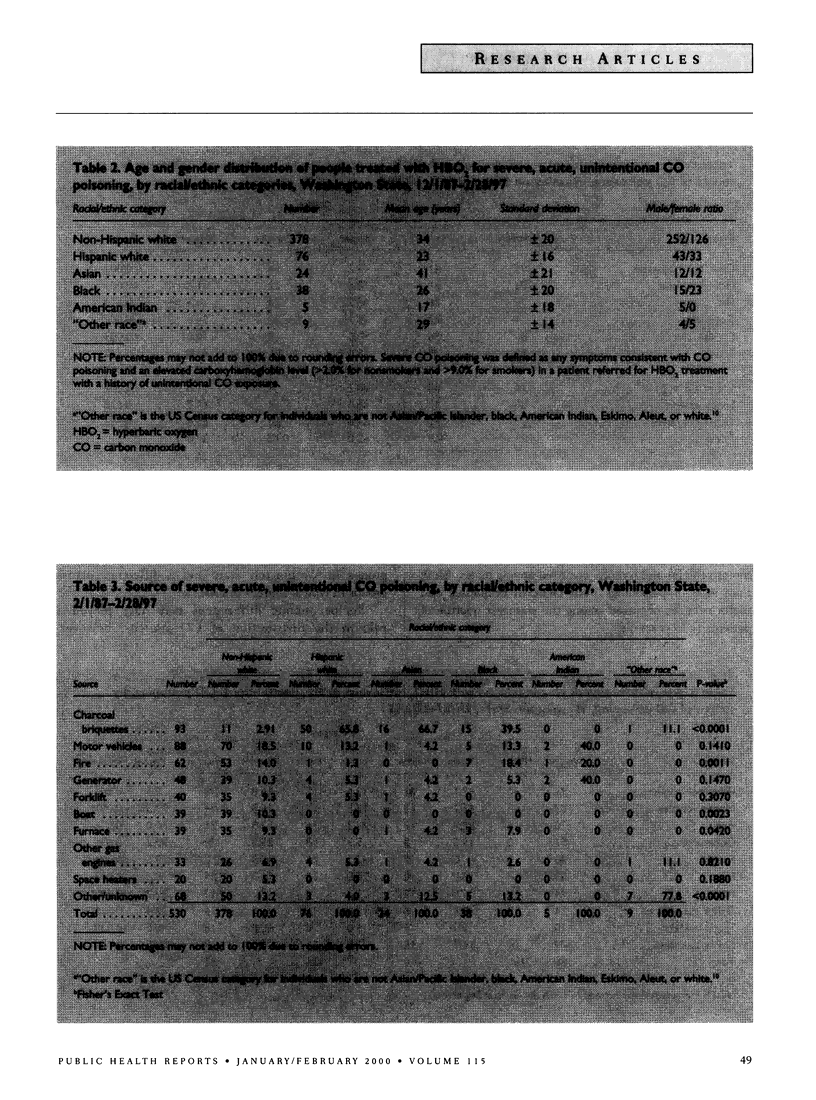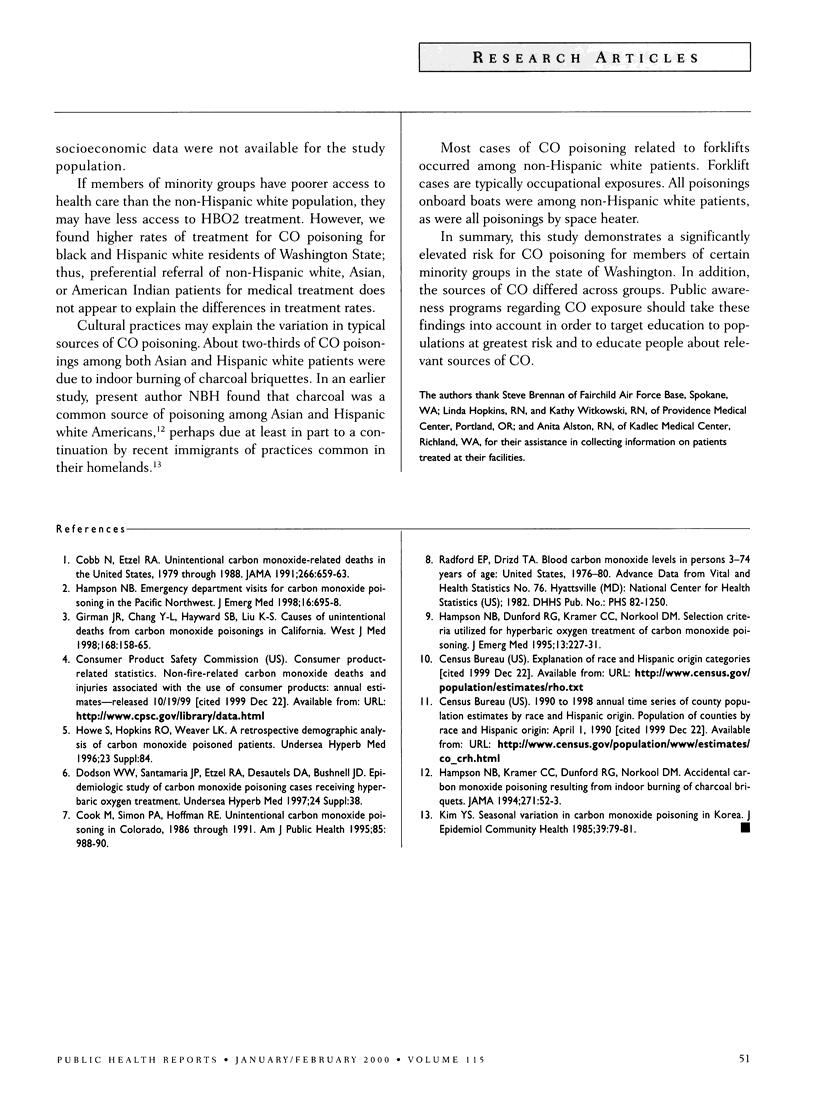Abstract
OBJECTIVE: This study was conducted to test the hypothesis that the incidence of severe, acute, unintentional carbon monoxide (CO) poisoning differs across racial/ethnic categories. METHODS: The authors retrospectively reviewed medical records of all Washington State residents treated with hyperbaric oxygen for severe, acute, unintentional CO poisoning from December 1, 1987, through February 28, 1997. RESULTS: Among 586 Washington State residents treated with hyperbaric oxygen for severe, acute, unintentional CO poisoning, racial/ethnic designations could be determined from record review for 530 (90%). The black and Hispanic white populations of Washington State had higher relative risks for severe, acute, unintentional CO poisoning than the non-Hispanic white population. The most common sources of CO poisoning differed by racial/ethnic category. CONCLUSIONS: Members of certain groups in Washington State are at higher risk for severe, unintentional CO poisoning. Public education programs regarding CO exposure should be targeted to populations at risk.
Full text
PDF





Selected References
These references are in PubMed. This may not be the complete list of references from this article.
- Cobb N., Etzel R. A. Unintentional carbon monoxide-related deaths in the United States, 1979 through 1988. JAMA. 1991 Aug 7;266(5):659–663. [PubMed] [Google Scholar]
- Cook M., Simon P. A., Hoffman R. E. Unintentional carbon monoxide poisoning in Colorado, 1986 through 1991. Am J Public Health. 1995 Jul;85(7):988–990. doi: 10.2105/ajph.85.7.988. [DOI] [PMC free article] [PubMed] [Google Scholar]
- Girman J. R., Chang Y. L., Hayward S. B., Liu K. S. Causes of unintentional deaths from carbon monoxide poisonings in California. West J Med. 1998 Mar;168(3):158–165. [PMC free article] [PubMed] [Google Scholar]
- Hampson N. B., Dunford R. G., Kramer C. C., Norkool D. M. Selection criteria utilized for hyperbaric oxygen treatment of carbon monoxide poisoning. J Emerg Med. 1995 Mar-Apr;13(2):227–231. doi: 10.1016/0736-4679(94)00144-8. [DOI] [PubMed] [Google Scholar]
- Hampson N. B. Emergency department visits for carbon monoxide poisoning in the Pacific Northwest. J Emerg Med. 1998 Sep-Oct;16(5):695–698. doi: 10.1016/s0736-4679(98)00080-8. [DOI] [PubMed] [Google Scholar]
- Hampson N. B., Kramer C. C., Dunford R. G., Norkool D. M. Carbon monoxide poisoning from indoor burning of charcoal briquets. JAMA. 1994 Jan 5;271(1):52–53. [PubMed] [Google Scholar]
- Kim Y. S. Seasonal variation in carbon monoxide poisoning in urban Korea. J Epidemiol Community Health. 1985 Mar;39(1):79–81. doi: 10.1136/jech.39.1.79. [DOI] [PMC free article] [PubMed] [Google Scholar]


